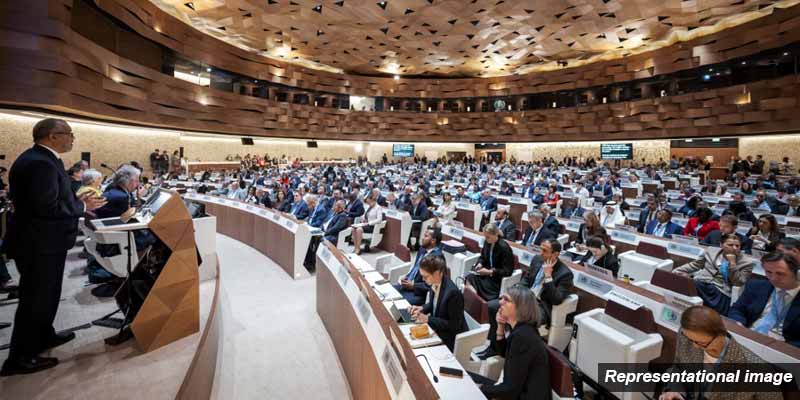- World
- May 21
World Health Assembly adopts historic ‘Pandemic Agreement’
• Member States of the World Health Organisation (WHO) formally adopted by consensus the world's first ‘Pandemic Agreement’ on May 20.
• The landmark decision by the 78th World Health Assembly culminates more than three years of intensive negotiations launched by governments in response to the devastating impacts of the COVID-19 pandemic.
• The agreement is driven by the goal of making the world safer from — and more equitable in response to — future pandemics.
• The pact aims to ensure that drugs, therapeutics and vaccines are globally accessible when the next pandemic hits.
• Governments adopted the WHO Pandemic Agreement in a plenary session of the World Health Assembly. The adoption followed approval of the Agreement by vote (124 in favour, 0 objections, 11 abstentions) in Committee by Member State delegations.
• The WHO Pandemic Agreement is the second international legal agreement negotiated under Article 19 of the WHO Constitution, the first being the WHO Framework Convention on Tobacco Control, which was adopted in 2003 and entered into force in 2005.
• The pact was touted as a victory for members of the global health agency at a time when multilateral organisations have been battered by sharp cuts in US foreign funding.
Significance of the agreement
• The effects of the devastating COVID-19 pandemic are still being felt. Around seven million people died, health systems were overwhelmed, and the global economy was practically driven to a standstill.
• The global turmoil prompted a stunned international community to pursue an agreement aimed at preventing such a catastrophic event from happening again — and ensuring the world is far better prepared in the future.
• The WHO Pandemic Agreement sets out the principles, approaches and tools for better international coordination across a range of areas, in order to strengthen the global health architecture for pandemic prevention, preparedness and response. This includes equitable and timely access to vaccines, therapeutics and diagnostics.
• Regarding national sovereignty, the Agreement states that: “Nothing in the WHO Pandemic Agreement shall be interpreted as providing the Secretariat of the WHO, including the Director-General of the WHO, any authority to direct, order, alter or otherwise prescribe the national and/or domestic law, as appropriate, or policies of any Party, or to mandate or otherwise impose any requirements that Parties take specific actions, such as ban or accept travellers, impose vaccination mandates or therapeutic or diagnostic measures or implement lockdowns.”
• The resolution on the WHO Pandemic Agreement adopted by the World Health Assembly sets out steps to prepare for the accord’s implementation. It includes launching a process to draft and negotiate a Pathogen Access and Benefit Sharing system (PABS) through an Intergovernmental Working Group (IGWG). The result of this process will be considered at next year’s World Health Assembly.
• According to the agreement, pharmaceutical manufacturers participating in the PABS system will play a key role in equitable and timely access to pandemic-related health products by making available to WHO “rapid access targeting 20 per cent of their real time production of safe, quality and effective vaccines, therapeutics, and diagnostics for the pathogen causing the pandemic emergency”.
• The distribution of these products to countries will be carried out on the basis of public health risk and need, with particular attention to the needs of developing countries.
What next?
• Once the Assembly adopts the PABS annex, the WHO Pandemic Agreement will then be open for signature and consideration of ratification, including by national legislative bodies. After 60 ratifications, the agreement will enter into force.
Manorama Yearbook app is now available on Google Play Store and iOS App Store

